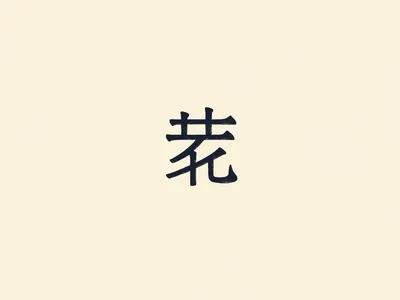
What are the most common characters for beginners to learn in Chinese
For beginners learning Chinese, it is essential to focus on foundational characters that are both commonly used and provide a basis for understanding the structure of more complex characters. These characters often include high-frequency words and basic radicals. Below are some of the most common types of characters for beginners to learn:
1. High-Frequency Characters
Beginners are often introduced to the most frequently used characters in daily life, such as:
- Numbers: 一 (yī, one), 二 (èr, two), 三 (sān, three)
- Basic Pronouns: 我 (wǒ, I/me), 你 (nǐ, you), 他/她 (tā, he/she)
- Common Verbs: 是 (shì, to be), 有 (yǒu, to have), 看 (kàn, to see)
- Everyday Nouns: 人 (rén, person), 家 (jiā, home/family), 水 (shuǐ, water) These characters are practical and help learners quickly build a basic vocabulary for communication 9, 13.
2. Radicals
Radicals are the building blocks of Chinese characters and are crucial for understanding their structure and meaning. Some important radicals include:
- 口 (kǒu, mouth): Found in characters like 吃 (chī, eat) and 喝 (hē, drink).
- 木 (mù, wood): Found in characters like 林 (lín, forest) and 树 (shù, tree).
- 氵(water radical): Found in characters like 河 (hé, river) and 海 (hǎi, sea). Learning radicals helps beginners deconstruct more complex characters and understand their meanings 4, 11.
3. Characters with Simple Structures
Characters with fewer strokes are easier for beginners to write and remember. Examples include:
- 日 (rì, sun/day)
- 月 (yuè, moon/month)
- 火 (huǒ, fire) These simple characters are often introduced early to build confidence in writing 20.
4. Characters from Basic Themes
Teaching materials often group characters by thematic categories such as:
- Family: 爸爸 (bàba, father), 妈妈 (māma, mother)
- Food: 米饭 (mǐfàn, rice), 茶 (chá, tea)
- Nature: 山 (shān, mountain), 水 (shuǐ, water) 5, 8.
5. Characters from the “Three Character Primer”
The Three Character Primer contains 541 foundational Chinese characters that form about 80% of basic vocabulary. This text is frequently used for teaching children and beginners because it introduces essential characters systematically 8.
By focusing on these categories of Chinese characters—frequent words, radicals, simple structures, thematic groups, and foundational texts—beginners can establish a strong foundation for further learning.
References
-
CCESK: A Chinese Character Educational System Based on Kinect
-
The Importance and Exploration of Constructing Unit Library Knowledge of Basic Chinese Characters
-
Three Character Primer and Chinese Character Teaching Materials
-
The First 100 Chinese Characters : The Quick and Easy Way to Learn the Basic Chinese Characters
-
Teenage beginners’ perceptions of learning Chinese characters: A case study
-
The Analysis of the Initial Stage of the Central Asian Students Writing Errors
-
A study of the inclusion of Chinese characters in the HNK word list
-
Learn Chinese Language Starting from “Basic Chinese Characters”
-
Multilingual BERT-based Word Alignment By Incorporating Common Chinese Characters
-
CHINESE CHARACTERS TEACHING THROUTH INTERESTING STORIES FOR FOREIGN BEGINNERS
-
How Chinese Characters Are Taught: An Analysis of Three Popular Textbooks Used in Macao
-
Using mnemonic techniques to memorize the tone of Chinese characters
-
A Review on the Reader-friendly Design of ‘A Chinese-English Dictionary with Colour Illustrations’